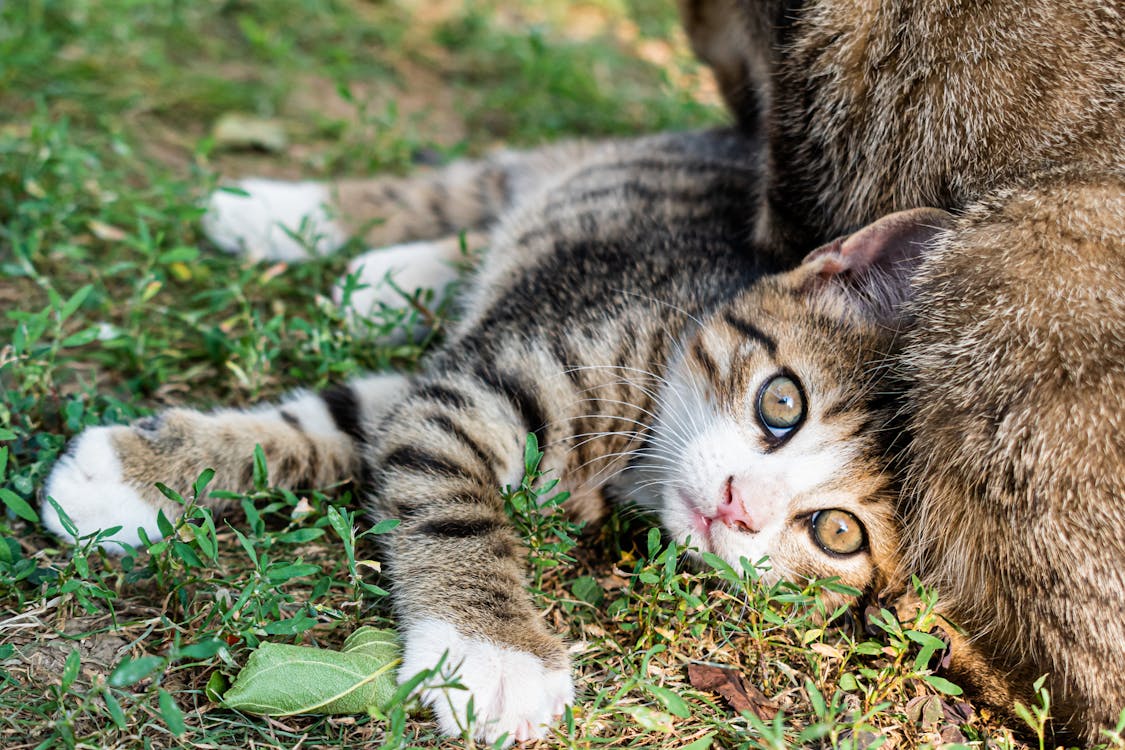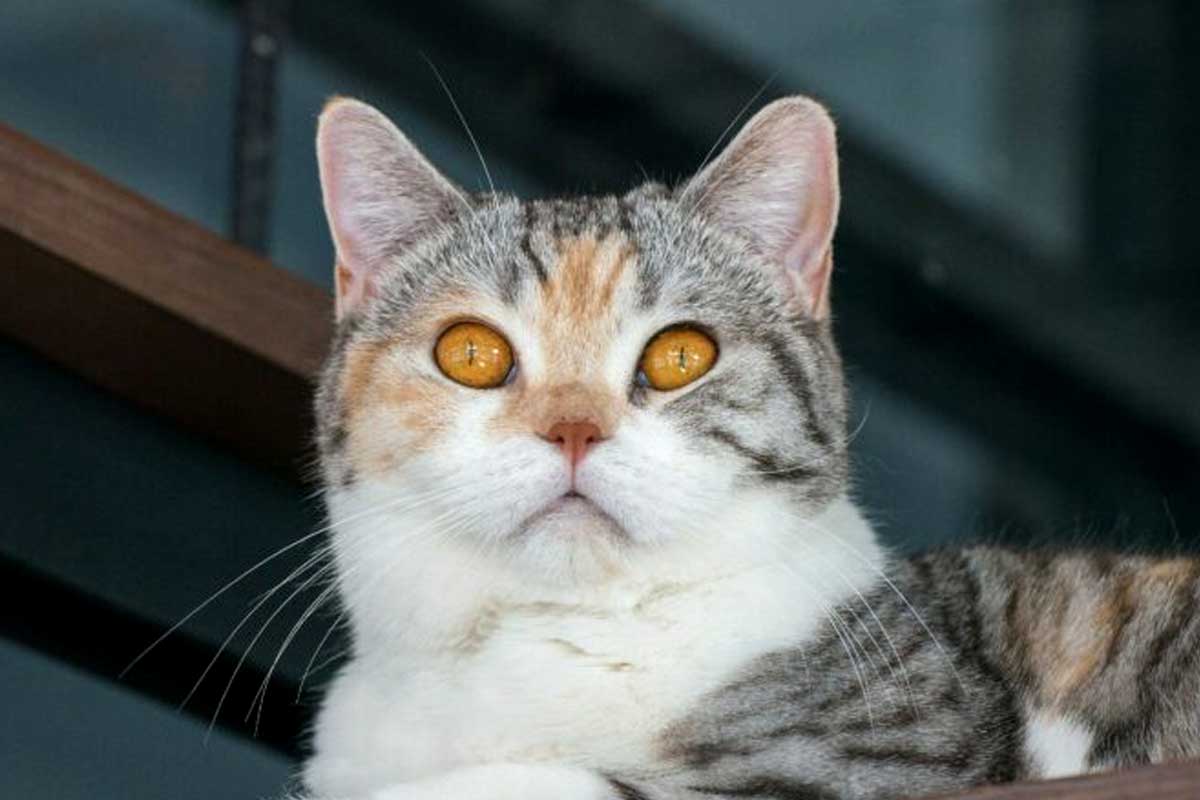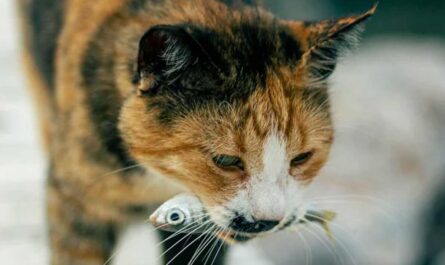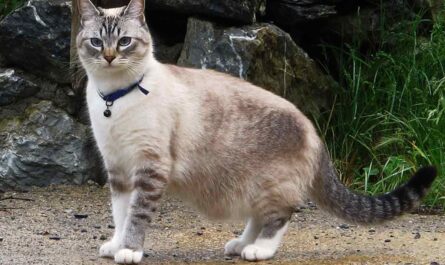6. Sneezing and Coughing
Respiratory Infection Signs: Sneezing and coughing are classic signs of a respiratory infection in cats.
Frequent Sneezing: If you notice your cat sneezing more frequently than usual or experiencing sudden, violent sneezing fits, it could indicate irritation or inflammation in their nasal passages. This frequent sneezing may be accompanied by discharge from the nose, ranging from clear to thick and mucus-like.
Persistent Cough: Similarly, a persistent cough, especially if accompanied by wheezing or difficulty breathing, warrants immediate veterinary attention to rule out more severe respiratory conditions. The cough may sound dry or wet, depending on the severity of the infection and the presence of mucus in the airways.
7. Lethargy
Indicators of Illness: When cats are under the weather, they often exhibit changes in behavior and activity levels.
Withdrawn Behavior: A normally playful and energetic cat may become withdrawn and lethargic, preferring to spend more time sleeping or resting in quiet corners of the house. They may seek out warm and cozy spots to rest, such as under furniture or in secluded areas.
Reduced Interest in Activities: They may also show less interest in their usual toys and activities, preferring to conserve energy for healing. You may notice a decline in their grooming habits, with a scruffier appearance due to decreased grooming.
Observing Sudden Changes: Pay attention to any sudden changes in behavior, as they can provide valuable clues about your cat’s health and may prompt the need for veterinary evaluation. If your cat’s lethargy persists or worsens, or if they show signs of distress such as difficulty breathing, it’s essential to seek prompt veterinary care to address any underlying health issues.

8. Changes in Grooming Habits
Typical Grooming Behavior: Cats are known for their fastidious grooming habits, but when they’re feeling unwell, their grooming routines may change.
Decrease in Grooming: A cat with a cold may groom themselves less frequently or neglect areas that they usually keep clean, leading to a scruffy or unkempt appearance. This decrease in grooming can be attributed to discomfort from respiratory symptoms or a general lack of energy.
Indicator of Well-being: Monitoring your cat’s grooming behavior is essential as it can indicate their overall well-being. Any significant deviation from their usual grooming routine may warrant closer attention and potential veterinary evaluation.
9. Respiratory Symptoms and Discharge
Common Respiratory Symptoms: Respiratory symptoms are prevalent in cats with colds, often manifesting as sneezing, coughing, or wheezing.
Changes in Breathing Patterns: Keep an eye out for changes in your cat’s breathing patterns, such as rapid or labored breathing, which may indicate underlying respiratory issues requiring medical attention. Cats may also exhibit open-mouth breathing, a sign of severe respiratory distress.
Nasal and Eye Discharge: Additionally, pay attention to any discharge from your cat’s nose or eyes. Watery or thick discharge may indicate the severity of their cold and potential complications such as secondary bacterial infections. Monitoring the color and consistency of the discharge can help your veterinarian determine the appropriate course of treatment.
10. Fever and Lethargy
Response to Infection: Fever is a common response to infection in cats, including colds caused by viruses. While detecting fever in cats without specialized equipment can be challenging, there are other signs to look out for.
Signs of Fever: Look for signs such as warm ears, lethargy, or reluctance to move. Cats with fever may also seek out cool surfaces to lie on, such as tile floors or bathroom fixtures.
Monitoring Condition: If you suspect that your cat has a fever, it’s crucial to monitor their condition closely. Keep track of any changes in their behavior or symptoms, and seek veterinary care if their condition worsens or if the fever persists for more than a day or two.
11. Decreased Appetite and Thirst
Common Symptoms: Cats with colds often experience a decreased appetite and thirst, which can lead to dehydration if left untreated.
Encouraging Hydration: Encourage your cat to drink water by providing fresh, clean bowls in easily accessible locations throughout the house. Consider placing multiple water bowls in different areas to encourage drinking.
Offering Wet Food: Wet food contains higher moisture content than dry kibble and may be more appealing to a cat with a diminished appetite. Offering wet food can help increase your cat’s overall fluid intake and prevent dehydration.
Consulting a Veterinarian: If your cat continues to refuse food or water, or if you notice any other concerning symptoms, consult your veterinarian for further guidance and treatment options. Dehydration can quickly become a serious issue in cats, so prompt intervention is essential.
12. Sneezing and Coughing
Respiratory Symptoms: Sneezing and coughing are common respiratory symptoms in cats with colds.
Frequency and Duration: If your cat is sneezing frequently or experiencing prolonged coughing fits, it’s essential to monitor their condition closely. These symptoms can indicate underlying respiratory distress and may require veterinary intervention.
Seeking Veterinary Care: If your cat’s symptoms worsen or persist, it’s crucial to seek veterinary care promptly. Your veterinarian can conduct a thorough examination and provide appropriate treatment to alleviate your cat’s discomfort and promote a speedy recovery.
13. Eye and Nose Discharge
Indicators of Infection: Eye and nose discharge are common symptoms of a cold in cats, often indicating inflammation or infection in the respiratory tract.
Appearance and Characteristics: Keep an eye out for watery or thick discharge around your cat’s eyes and nose. Additionally, observe for any accompanying redness or swelling, as these may be signs of more severe complications such as conjunctivitis or sinus infections.
Consulting a Veterinarian: If you notice eye and nose discharge in your cat, it’s essential to consult your veterinarian for proper diagnosis and treatment. Left untreated, these symptoms can lead to discomfort and potentially more serious health issues, so early intervention is key to your cat’s well-being.
14. Changes in Behavior
Lethargy and Reduced Activity: Cats with colds often experience increased lethargy and may be less active than usual. They may spend more time sleeping or resting and show reluctance to engage in their usual activities, such as playing or exploring.
Decreased Appetite: Another common behavioral change in cats with colds is a decreased appetite. Your cat may show less interest in food or may refuse to eat altogether. This can lead to weight loss and dehydration if not addressed promptly. Business – Money Making – Marketing – E-commerce
Reluctance to Engage: Pay attention to any reluctance your cat shows towards engaging in their usual activities. They may avoid toys, interactions with other pets, or even socializing with family members if they’re feeling unwell.
Consulting a Veterinarian: If you notice significant changes in your cat’s behavior or if they exhibit unusual symptoms, it’s essential to consult your veterinarian for guidance and support. Your vet can assess your cat’s condition, provide appropriate treatment, and offer advice on how to care for your cat during their illness.
Monitoring and Care: By monitoring your cat’s behavior closely and providing appropriate care, you can help them recover from their cold more quickly and comfortably. Ensure they have a warm and comfortable environment, encourage them to drink plenty of water, and offer easily digestible, palatable foods to entice their appetite.
Consultation with a Veterinarian
Prompt Veterinary Care: If you notice any combination of the signs mentioned earlier or suspect that your cat may have a cold, it’s crucial to seek veterinary care promptly.
Thorough Examination: A veterinarian can perform a comprehensive examination, including a physical assessment and possibly urine analysis and other diagnostic tests, to confirm the presence of a cold and determine its severity. Cat accessories on Amazon
Confirmation and Treatment: Once the cold is diagnosed, your veterinarian can recommend appropriate treatment measures to alleviate your cat’s symptoms and promote recovery. This may include medication to relieve congestion or inflammation, as well as supportive care to address dehydration or other related issues.
Early Intervention: Early intervention is key to managing colds in cats effectively and preventing potential complications. By seeking veterinary care promptly, you can ensure that your cat receives timely treatment and support to overcome their illness.
Communication with Your Veterinarian: Don’t hesitate to reach out to your veterinarian if you have any concerns about your cat’s health or if you notice any changes in their condition. Your veterinarian can provide guidance and support tailored to your cat’s specific needs, helping them recover and return to their usual vibrant selves.




